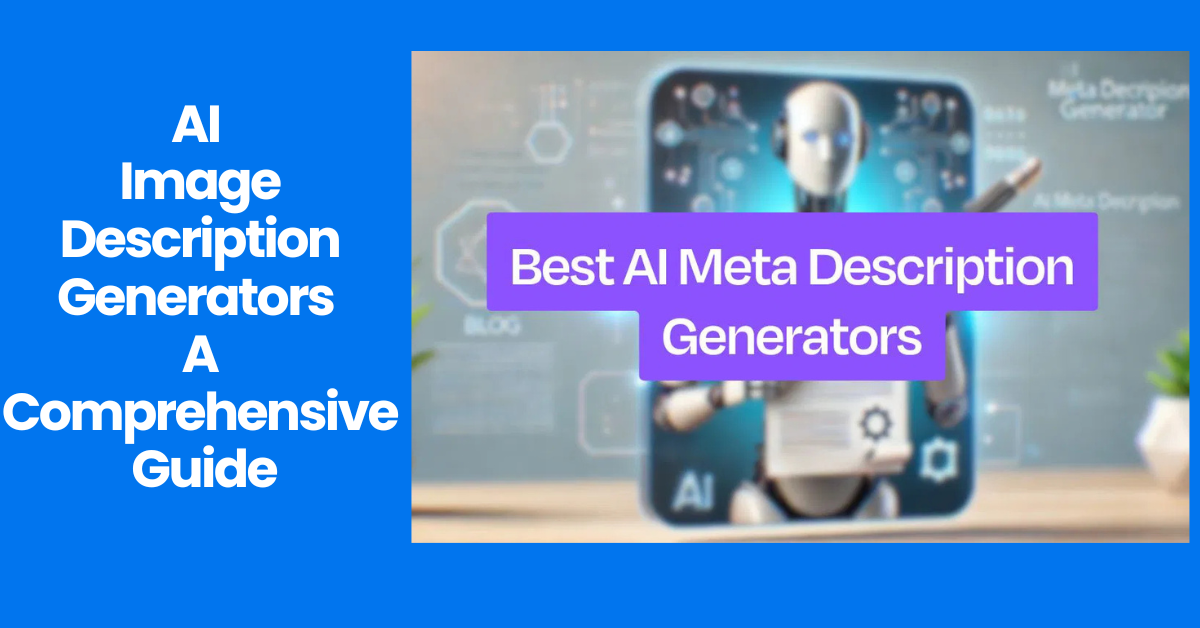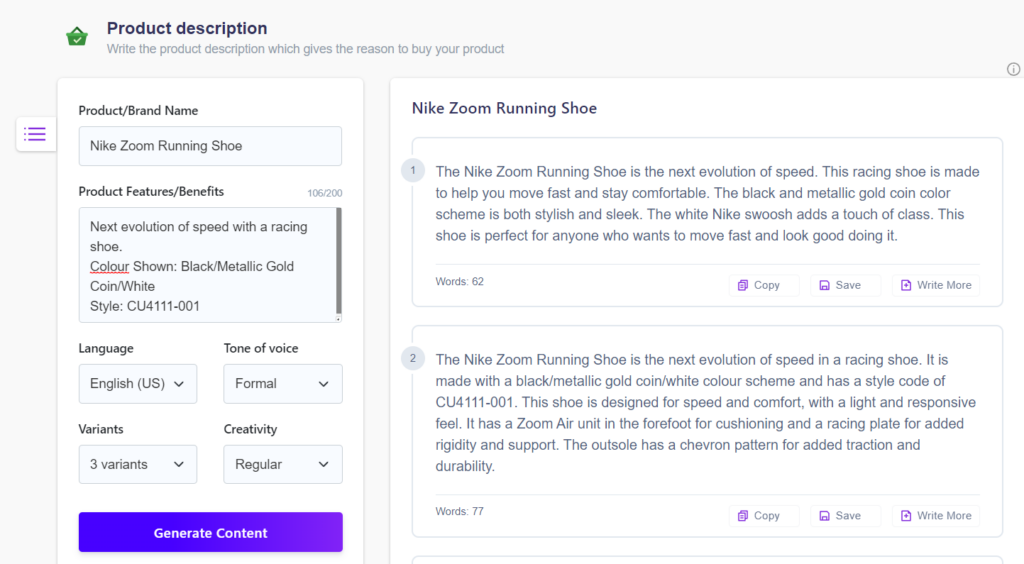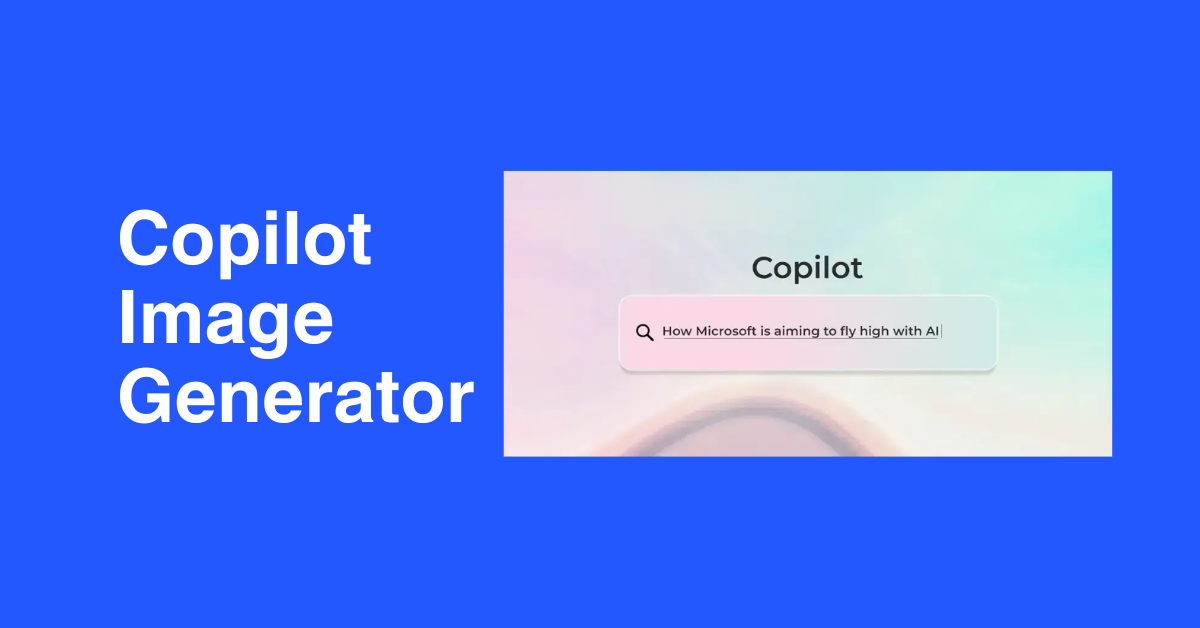
AI Image Description Generators A Comprehensive Guide
- Image Generators
- November 9, 2024
- No Comments
In the rapidly evolving landscape of artificial intelligence, one area that has garnered significant attention is AI image description generators. These innovative tools utilize machine learning algorithms to analyze images and generate descriptive text, making visual content more accessible and understandable for a wider audience. As we dive deeper into this topic, we’ll explore how these generators work, their applications, benefits, and potential future trends. This comprehensive guide aims to provide readers with a thorough understanding of AI image description generators—an essential technology in today’s digital world.
How AI Revolutionizes Image Description: A Deep Dive

Artificial intelligence has transformed numerous industries, and image processing is no exception. AI image description generators leverage advanced algorithms and deep learning techniques to interpret visual data, enabling computers to generate human-like descriptions of images.
Understanding the Technology Behind AI Image Description
At the core of AI image description generators lies computer vision, a field of AI focused on enabling machines to interpret and understand visual information. This involves several stages, including image recognition, object detection, and natural language processing (NLP).
Image recognition allows an AI model to identify various elements within an image, such as objects, people, and settings. Once these elements have been recognized, the next step is to detect relationships between them. For example, if an image contains a dog playing with a ball, the AI must understand both the identities of the dog and ball and their interactions.
Natural language processing comes into play when the AI transforms its visual analysis into coherent and context-specific sentences. By combining these technologies, AI image description generators can produce text that accurately reflects the content, context, and emotions conveyed in an image.
The Role of Training Data in AI Image Description
The effectiveness of AI image description generators hinges on the quality and quantity of the training data used to develop them. These models are typically trained on vast datasets containing images paired with descriptive text. The more diverse and comprehensive the dataset, the better the AI becomes at recognizing patterns and generating accurate descriptions.
Training data can include anything from everyday objects to complex scenes, encompassing varying styles, contexts, and cultures. Consequently, a well-trained model can create nuanced descriptions that cater to different audiences and situations.
Challenges in AI Image Description
Despite the advancements in AI technology, challenges remain in achieving perfect accuracy in image descriptions. One primary concern is bias in the training data. If certain demographics or cultural contexts are underrepresented, the AI may produce skewed or inaccurate descriptions. Additionally, AI models may struggle with abstract concepts, humor, or sarcasm, which can lead to misinterpretation of the image’s intent.
As researchers continue to refine AI image description generators, addressing these challenges will be essential for creating systems that resonate across diverse populations and applications.
The Benefits of Using AI Image Description Generators

AI image description generators offer numerous advantages that enhance the way visual content is consumed and understood. From improving accessibility to streamlining content creation, these tools present opportunities across various sectors.
Enhancing Accessibility for Individuals with Disabilities
One of the most significant benefits of AI image description generators is their potential to improve accessibility for individuals with visual impairments. By providing detailed textual descriptions of images, these tools enable visually impaired users to engage with visual content, fostering inclusivity in online spaces.
Accessible content not only enriches the user experience but also contributes to a broader societal commitment to equal access. Implementing AI-generated descriptions can help organizations comply with various regulations and guidelines aimed at promoting accessibility, such as the Web Content Accessibility Guidelines (WCAG).
Streamlining Content Creation
Content creators, marketers, and social media managers can greatly benefit from AI image description generators by saving time and resources. Instead of manually crafting descriptions for every image, professionals can rely on AI to produce high-quality text quickly and efficiently.
This efficiency allows teams to focus their efforts on other critical tasks, ultimately boosting productivity and creativity. Moreover, by employing AI-generated descriptions, brands can ensure consistent messaging across their visual content, reinforcing identity and brand awareness.
Enabling Better Search Engine Optimization (SEO)
AI-generated image descriptions can significantly impact search engine optimization strategies. By creating descriptive text that accurately represents the visual content, organizations can improve their chances of appearing in search results related to specific images.
Search engines increasingly prioritize accessibility and relevance, so providing detailed and meaningful descriptions enhances the visibility of images online. As a result, businesses can increase traffic to their websites while optimizing their content strategy.
Top AI Image Description Generators: A Comparison

With a myriad of AI image description generators available, it can be challenging to determine which tool best suits your needs. In this section, we will examine some of the leading platforms, highlighting their unique features and capabilities.
Overview of Popular AI Image Description Generators
Several noteworthy AI image description generators have emerged in recent years, each catering to different audiences and use cases. Some of the popular options include OpenAI’s DALL-E, Google’s Vision AI, and IBM Watson Visual Recognition. While these platforms leverage similar underlying technologies, they come with distinct functionalities and integrations.
Key Features of Each Generator
OpenAI’s DALL-E stands out for its ability to generate both images and descriptions based on textual prompts. Users can input a phrase, and DALL-E will create original visuals along with relevant descriptions, making it versatile for creative projects.
Google’s Vision AI focuses on image analysis and provides robust features for developers looking to integrate AI capabilities into their applications. Its API offers customizable solutions for generating image descriptions and extracting insights from visual content.
IBM Watson Visual Recognition emphasizes accuracy and reliability, particularly in enterprise settings. It allows businesses to analyze images at scale, generating insightful descriptions while ensuring compliance with corporate standards.
Evaluating Performance and Usability
When selecting an AI image description generator, performance and usability should be key considerations. Factors such as ease of use, customization options, and integration capabilities can significantly affect the overall experience.
Many users appreciate user-friendly interfaces and straightforward workflows, allowing them to quickly generate descriptions without extensive technical knowledge. Additionally, seamless integration with existing tools will enhance the convenience of incorporating AI image description generators into daily operations.
Beyond Text: Exploring AI Image Description Capabilities
While generating text-based descriptions is the primary function of AI image description generators, the capabilities extend beyond mere text output. This section explores additional functionalities and innovations that enhance the utility of these tools.
Image Captioning and Tagging
AI image description generators often include features for image captioning and tagging. Captions provide contextual information about an image, while tags categorize visual content based on identifiable elements. Combined, these capabilities enrich the user experience by allowing audiences to quickly grasp the essence of the image.
For instance, e-commerce platforms can utilize image tagging to help users find products based on visual attributes rather than relying solely on text searches. This approach caters to the increasing demand for intuitive shopping experiences.
Multimodal Outputs
Another exciting development in AI image description generators is the incorporation of multimodal outputs. These tools can generate not only textual descriptions but also audio narrations, visual summaries, and even interactive elements.
Such versatility facilitates engagement across varied platforms and formats, broadening the audience reach. For instance, educational institutions can implement multimodal outputs to support diverse learning preferences, ensuring that all students can access crucial information.
Integration with Other AI Technologies
AI image description generators can also be integrated with other AI technologies, such as chatbots and virtual assistants. Through this integration, users can engage with visual content more interactively, asking questions or requesting additional information about specific elements within an image.
This synergy creates a richer user experience and enhances the utility of AI-powered tools, paving the way for future innovations in human-computer interaction.
AI Image Description Generators: Applications and Use Cases
The applications of AI image description generators span a wide array of industries, reflecting the technology’s adaptability and versatility. Below, we will explore some real-world use cases and scenarios where these tools are making a difference.
E-Commerce and Retail
In the e-commerce sector, AI image description generators play a vital role in enhancing product listings. By providing detailed descriptions of items, these tools improve searchability and help customers make informed purchasing decisions.
Furthermore, AI-generated descriptions can cater to various customer preferences, adapting language and terminology according to target demographics. As a result, retailers can optimize their marketing strategies, boost conversion rates, and elevate customer satisfaction.
Social Media and Content Creation
Social media platforms thrive on visual content, making AI image description generators invaluable for marketers and influencers. By producing engaging captions that resonate with audiences, these tools can enhance user interaction and foster community engagement.
Additionally, AI-generated descriptions can assist in scheduling posts and managing content calendars. With the ability to create customized descriptions for different platforms, brands can maintain cohesive messaging while catering to their unique user bases.
Healthcare and Medical Imaging
In the healthcare industry, AI image description generators offer immense potential for analyzing medical images. By generating descriptive reports based on radiological scans, these tools help medical professionals assess patient conditions and improve diagnostic accuracy.
Moreover, AI can facilitate communication between medical staff and patients by translating complex imaging data into comprehensible language. This clarity encourages patient involvement in healthcare decisions, ultimately contributing to better health outcomes.
The Future of AI Image Description: Trends and Innovations
As technology continues to advance, the future of AI image description generators looks promising. Several emerging trends and innovations hint at what lies ahead for this dynamic field.
Advancements in Natural Language Processing
Natural language processing remains a focal point in the evolution of AI image description generators. Ongoing research aims to enhance linguistic fluency and contextual understanding, allowing AI models to produce richer and more nuanced descriptions.
Future developments may involve the incorporation of user feedback, enabling AI systems to learn from real-world interactions and continuously refine their output. This iterative process will ensure that AI-generated descriptions become increasingly sophisticated over time.
Growing Emphasis on Ethical AI
As AI image description generators proliferate, there will be a growing emphasis on ethical considerations. Developers and organizations must address issues related to bias, transparency, and accountability to build trust with users and stakeholders.
Efforts to create fairer AI systems will involve diversifying training datasets and implementing guidelines for ethical AI usage. Establishing clear standards will safeguard against unintended negative consequences while promoting responsible AI adoption.
Cross-Industry Collaborations
The future of AI image description generators may also witness increased collaboration between industries. Partnerships between tech companies, healthcare providers, educational institutions, and content creators could yield powerful synergies, unlocking new possibilities for applying AI image description technology.
By harnessing collective expertise, these collaborations can lead to innovative solutions that address specific challenges in various fields, ultimately contributing to greater societal impact.
Ethical Considerations in AI Image Description
As with any emerging technology, ethical considerations surrounding AI image description generators merit careful examination. This section delves into the critical aspects of ethics in AI image generation.
Addressing Bias in AI Models
Bias is one of the most pressing concerns in AI development, and AI image description generators are no exception. If the training data used to develop these models is imbalanced, the generated descriptions may reflect stereotypes or omit vital perspectives.
To mitigate bias, it is crucial to curate diverse datasets that encompass a wide range of demographics, cultures, and experiences. By prioritizing inclusivity, developers can create AI systems that respect and represent the richness of human diversity.
The Importance of Transparency
Transparency is essential for building trust in AI systems. Users should be informed about how AI image description generators work, including their limitations and potential biases. Clear communication fosters understanding and empowers users to critically evaluate the output generated by these tools.
Establishing transparent practices in AI development can also encourage collaboration and open dialogue among stakeholders, paving the way for responsible innovation.
User Consent and Privacy
Another ethical consideration is the issue of user consent and privacy when using AI image description generators. Organizations must ensure that users’ images are processed ethically and responsibly, obtaining explicit consent before utilizing their visual content for training purposes.
Respecting user privacy builds trust and encourages positive relationships between AI developers and communities, ultimately benefiting everyone involved.
Unlocking Accessibility: AI Image Description for the Visually Impaired
AI image description generators hold transformative potential for enhancing accessibility, particularly for visually impaired individuals. By generating descriptive text that conveys visual information, these tools enable users to engage with content previously inaccessible to them.
Bridging the Information Gap
For many visually impaired individuals, visual content poses a barrier to accessing information. AI image description generators serve as a bridge, providing detailed descriptions of images that convey essential context and meaning.
This added layer of information helps users form mental images of visuals, enriching their understanding of content while fostering inclusion in digital spaces. As a result, organizations can create more equitable environments, where all individuals have the opportunity to participate fully.
Supporting Education and Learning
In educational settings, AI image description generators can promote inclusive learning experiences. By offering detailed descriptions of diagrams, charts, and other visual materials, these tools ensure that visually impaired students can comprehend core concepts alongside their peers.
Furthermore, educators can leverage AI-generated descriptions to create accessible course materials, aligning with universal design principles that prioritize flexibility and adaptability in teaching methods.
Empowering Independent Navigation
AI image description generators can also play a role in independent navigation and mobility for visually impaired individuals. By integrating these tools into assistive technologies, users can receive real-time descriptions of their surroundings, empowering them to navigate unfamiliar spaces confidently.
This capability not only enhances quality of life but also contributes to a sense of autonomy among visually impaired individuals, promoting active participation in society.
Building Your Own AI Image Description Generator
For those interested in developing their own AI image description generator, the process involves several stages, from model selection to deployment. This section outlines the key steps and considerations for building a successful system.
Defining Your Objectives and Use Cases
Before embarking on the development journey, it’s essential to clarify your objectives and potential use cases for the AI image description generator. Identifying the specific audience and applications will inform decisions throughout the development process.
Consider factors such as the types of images you’ll be working with and the desired level of detail in the generated descriptions. This clarity will guide your choices regarding data sources, algorithms, and evaluation metrics.
Selecting the Right Model and Framework
Choosing the appropriate AI model and framework is pivotal to creating an effective image description generator. Numerous architectures and libraries are available, including convolutional neural networks (CNNs) for image recognition and recurrent neural networks (RNNs) or transformers for natural language generation.
Familiarize yourself with the strengths and limitations of various models and frameworks, and select those that align with your objectives. Additionally, consider user-friendliness, scalability, and community support when making your choice.
Training and Fine-Tuning Your Model
Once you have selected a model, the next step is to gather the necessary training data and fine-tune the system. High-quality datasets featuring images paired with descriptive text are crucial for optimal performance.
During training, monitor the model’s progress and assess its performance through validation metrics. Fine-tuning techniques, such as adjusting hyperparameters or augmenting the dataset, can further enhance the accuracy and quality of the generated descriptions.
Deploying and Testing Your Solution
After successfully training your AI image description generator, it’s time to deploy and test the solution. Prioritize easy integration with existing platforms and user interfaces, ensuring a seamless experience for end-users.
Conduct thorough testing to identify any issues or areas for improvement. Gathering user feedback during this phase will provide valuable insights that can inform ongoing refinements and enhancements.
Conclusion
AI image description generators represent a groundbreaking intersection of technology and accessibility, revolutionizing how we engage with visual content. As these tools continue to evolve, they promise to enhance inclusivity across various sectors, bridging gaps and expanding horizons for users worldwide.
From transforming e-commerce strategies to supporting education, the applications of AI image description generators are vast and impactful. However, as we embrace these innovations, it is crucial to remain vigilant about ethical considerations, ensuring that fairness and transparency guide their development.
Ultimately, the future of AI image description generators holds immense potential. By harnessing the power of artificial intelligence and committing to responsible practices, we can unlock a world where visual content is accessible and engaging for all.
Looking to learn more? Dive into our related article for in-depth insights into the Best Tools For Image Generation. Plus, discover more in our latest blog post on ai image generator camera position prompts. Keep exploring with us!
Related Tools:
Image Generation Tools
Video Generators
Productivity Tools
Design Generation Tools
Music Generation Tools





